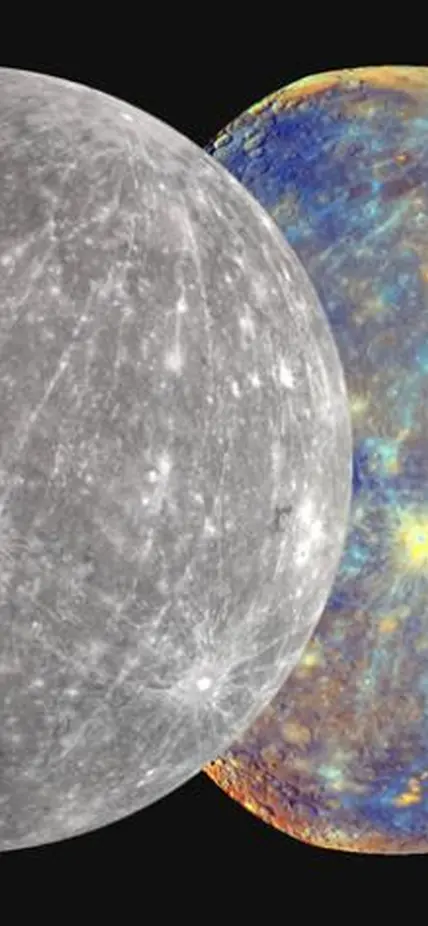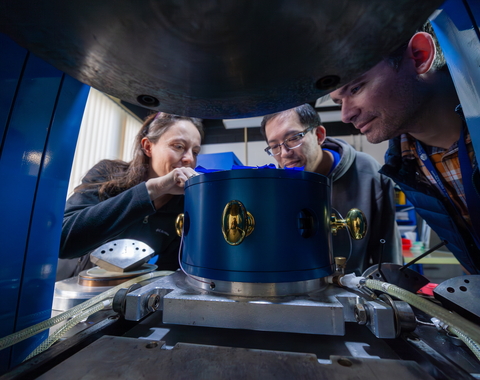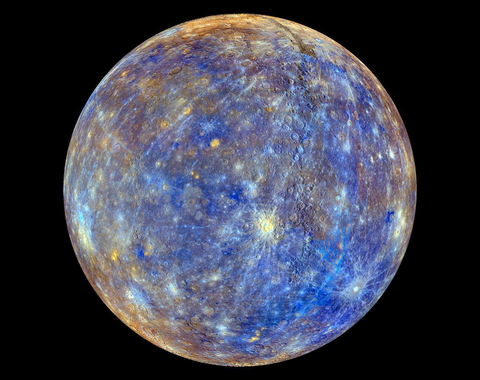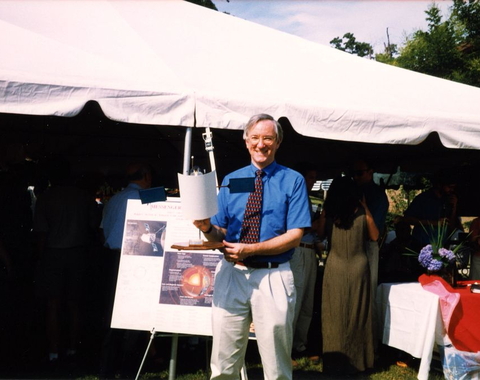Mercury doesn’t give up its secrets easily. The smallest planet in our Solar System is also one of the most extreme—a Sun-scorched, metal-rich world with a puzzling magnetic field and lavas unlike anything found on Earth.
“We still don’t fully understand how Mercury got to be the way it is,” said Anne Pommier, an experimental geophysicist at Carnegie Science’s Earth and Planets Laboratory (EPL). “But each new data point helps narrow down the possibilities.”
In a recent Neighborhood Lecture, Pommier explored Mercury’s past, present, and future—drawing on decades of research, new lab experiments, and the promise of a new mission on the horizon.
A Planet That Defies Expectations
Mercury has long fascinated Carnegie scientists.
In 1903, the institution’s Year Book noted that “observations of Mercury are much wanted.” Decades later, planetary scientist George Wetherill—director of Carnegie’s former Department of Terrestrial Magnetism (DTM, which is now part of EPL)—predicted Mercury’s heavily cratered surface well before spacecraft confirmed it. In the 2000s, another DTM director, Sean Solomon, led NASA’s MESSENGER mission, which orbited Mercury for four years and transformed our understanding of its surface and interior.

“All we know about this planet pretty much comes from two missions: Mariner 10 and MESSENGER,” said Pommier. “Both of them raised as many questions as they answered.”
One of the biggest: Why is Mercury so metal-rich? Its core makes up 60 percent of the planet’s volume—compared to Earth’s 15 percent. Some scientists believe it formed from metal-rich building blocks others think that early collisions stripped away much of its rocky mantle.
“We need more data from the field, more experiments, more modeling to see which hypothesis makes the most sense,” said Pommier.
A New Mission and New Tools
Answers may soon be on the way. In 2025, the joint European-Japanese mission BepiColombo will begin orbiting Mercury. Its instruments will probe the planet’s magnetic field, chemistry, and—most exciting for Pommier—electrical conductivity.
But interpreting that data requires something we don’t yet have: a detailed understanding of how Mercury-like rocks behave under Mercury-like conditions.
To bridge that gap, Pommier’s team creates analog materials that replicate Mercury’s oxygen-poor—or “reduced”—geochemistry. In such environments, elements behave differently, forming unusual minerals.
“Mercury is a very reduced planet—completely unlike Earth,” Pommier said. Its rocks are rich in sulfur and other elements that thrive in oxygen-poor environments, forming minerals like iron and calcium sulfides rarely seen on Earth
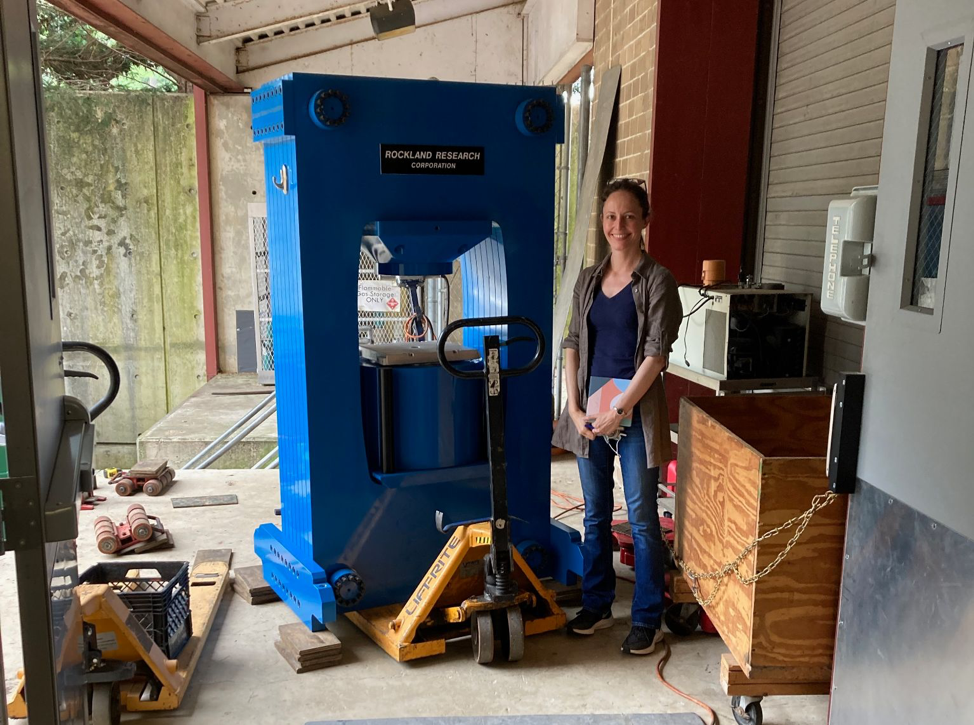
Making Magma from Scratch
To study Mercury’s volcanic past, Pommier’s collaborators synthesized Mercury-like glasses—artificial lavas based on MESSENGER data—and analyzed them using high-resolution tools including Raman spectroscopy, nuclear magnetic resonance (NMR), and electron microscopy.
The results revealed a striking difference. On Earth, lava is built from silicon-oxygen bonds that form sticky, polymer-like chains. On Mercury, sulfur bonds with silicon to create shorter, less connected silicon-sulfur structures.
“This radically changes their physical properties,” said Pommier. “Sulfur breaks up those long chains and replaces them with shorter, less interconnected structures.”
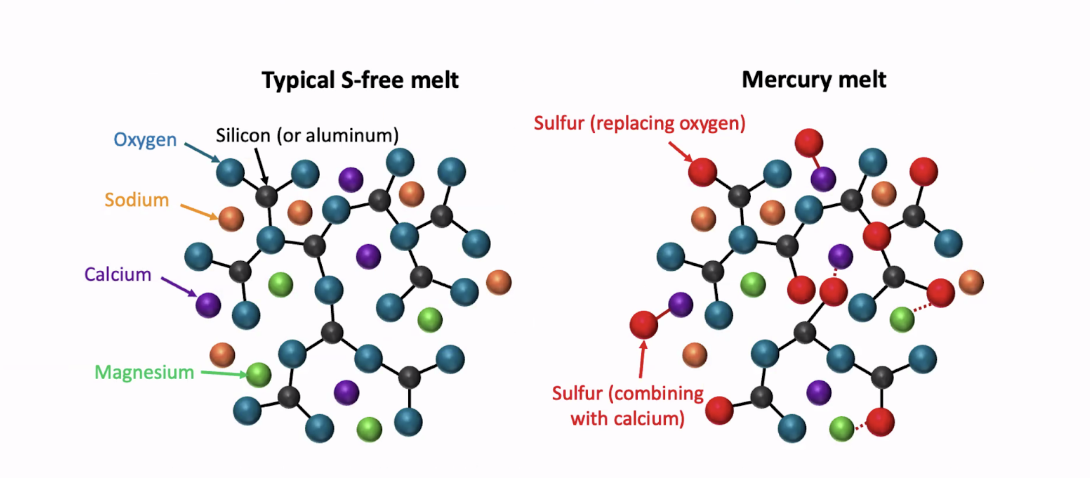
The upshot? Mercury’s ancient lavas may have flowed more like syrup than tar. Former Carnegie postdoc Megan Mouser measured these viscosities and found them to be orders of magnitude lower than Earth’s. That might help explain the planet’s surprisingly smooth volcanic plains—though Pommier notes other factors could be involved.
Still, it underscores a broader truth in planetary science: atomic-scale chemistry can shape entire landscapes.
Simulating a Magnetic Past
Mercury’s magnetic field is another mystery. Although weak, it’s still active—surprising for such a small, slowly cooling planet. To explore why, Pommier and U.K.-based colleague Christopher Davies and his research group ran thousands of models simulating Mercury’s core evolution over billions of years.
Only a narrow range of scenarios reproduced both the field we observe today and the magnetic signature detected in crustal rocks that formed 3.8 billion years ago. In these models, Mercury maintains its dynamo by slowly growing a solid inner core, while a thin convecting layer in the outer core continues to generate the field.
“We think the convecting region in the molten outer core is getting thinner and thinner,” said Pommier, “which might explain why the field is so weak today.”
The Importance of Fundamental Research
The tools and techniques developed in Pommier’s lab—such as high-pressure presses, spectroscopy, and thermal modeling—are also used in energy research, materials science, and electronics.
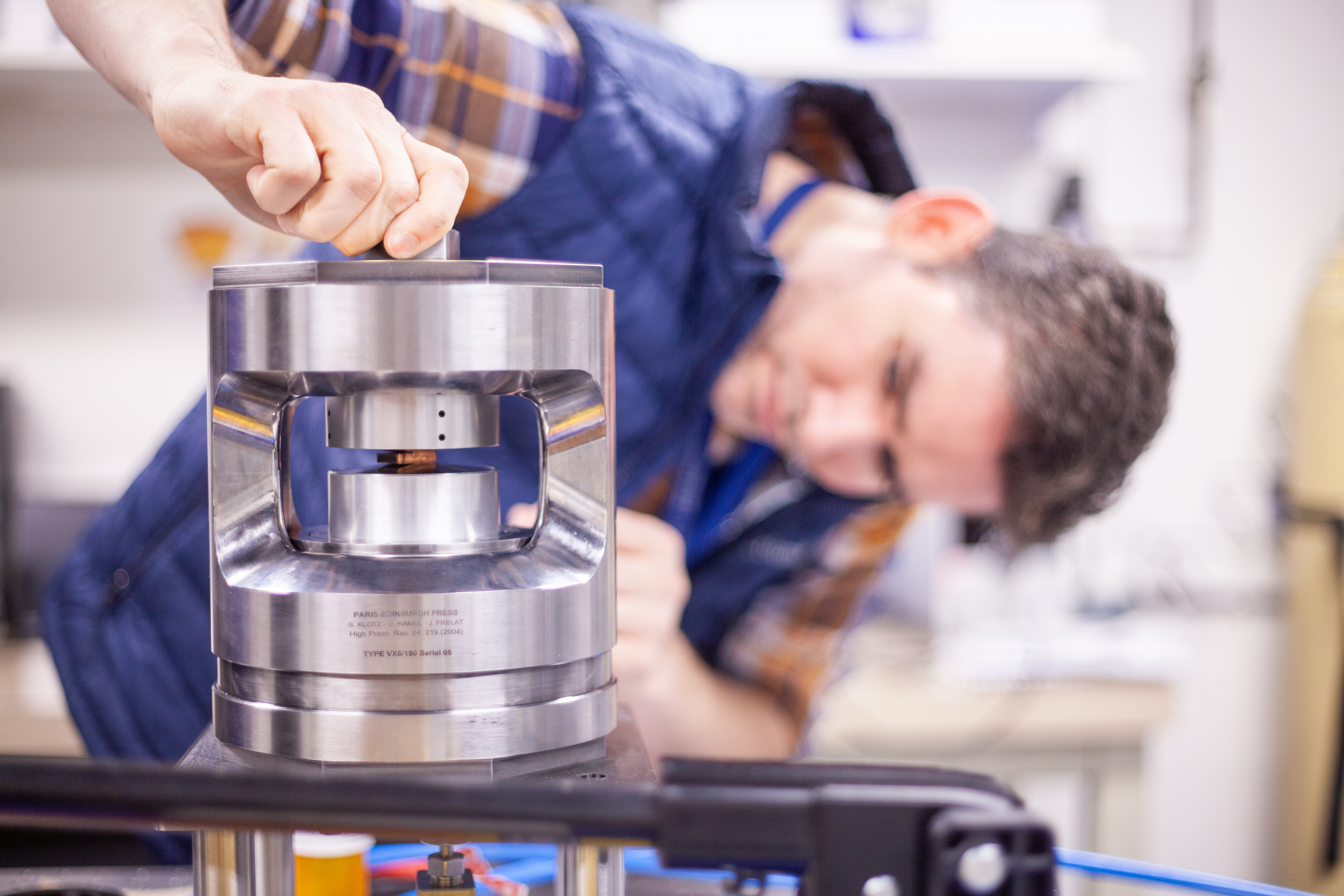
“Basic research leads to discoveries that not only tell us about Mercury,” said EPL Director Mike Walter, “they also lead to technical advances that have applications to the real world.”
Walter and Pommier both emphasized that foundational science—the kind that reveals what Mercury is made of or how a magnetic field forms—ultimately underpins the discoveries and technologies that shape our lives.
Pommier noted that her lab is always interested in philanthropic support from those who are interested in helping to advance a deeper understanding of planetary interiors.
Why Mercury Still Matters
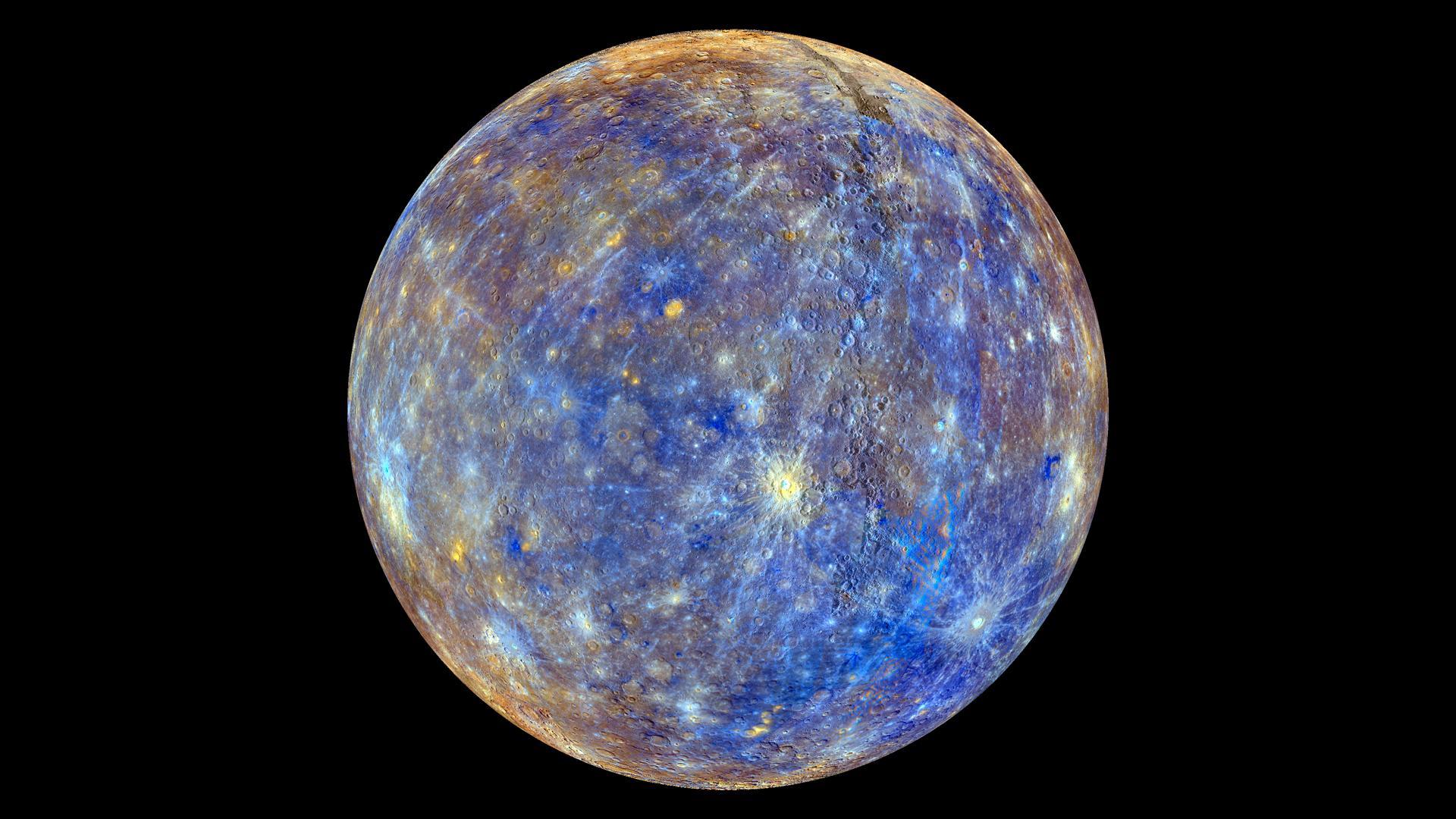
In a universe full of rocky planets, the one that breaks all rules might be the key to understanding them all.
As astronomers discover more rocky worlds around distant stars, Mercury serves as a crucial benchmark—close enough to study, yet alien enough to challenge our ideas about how planets form and evolve.
“Mercury is so off—it has this huge core, weird chemistry, and a magnetic field that doesn’t quite add up,” Pommier said. “In a way, it’s like an exoplanet in our own backyard.”
And with BepiColombo on the way, scientists are gearing up for a new wave of discoveries. Experiments like Pommier’s will be essential for interpreting what the mission finds.
“Once the data arrive, we’ll have something to compare it all to. The new field observations will guide new experiments, building a feedback loop between lab and space.”
In other words, the work is just beginning.
